2. Ernfors P, Wetmore C, Olson L, Persson H. 1990; Identification of cells in rat brain and peripheral tissues expressing mRNA for members of the nerve growth factor family. Neuron. 5:511–526. DOI:
10.1016/0896-6273(90)90090-3. PMID:
2206535.

3. Nibuya M, Morinobu S, Duman RS. 1995; Regulation of BDNF and trkB mRNA in rat brain by chronic electroconvulsive seizure and antidepressant drug treatments. J Neurosci. 15:7539–7547. DOI:
10.1523/JNEUROSCI.15-11-07539.1995. PMID:
7472505. PMCID:
PMC6578063.

4. Amendola T, Fiore M, Aloe L. 2003; Postnatal changes in nerve growth factor and brain derived neurotrophic factor levels in the retina, visual cortex, and geniculate nucleus in rats with retinitis pigmentosa. Neurosci Lett. 345:37–40. DOI:
10.1016/S0304-3940(03)00491-9. PMID:
12809983.

5. Mannermaa E, Vellonen KS, Urtti A. 2006; Drug transport in corneal epithelium and blood-retina barrier: emerging role of transporters in ocular pharmacokinetics. Adv Drug Deliv Rev. 58:1136–1163. DOI:
10.1016/j.addr.2006.07.024. PMID:
17081648.

6. Tao W, Wen R, Goddard MB, Sherman SD, O'Rourke PJ, Stabila PF, Bell WJ, Dean BJ, Kauper KA, Budz VA, Tsiaras WG, Acland GM, Pearce-Kelling S, Laties AM, Aguirre GD. 2002; Encapsulated cell-based delivery of CNTF reduces photoreceptor degeneration in animal models of retinitis pigmentosa. Invest Ophthalmol Vis Sci. 43:3292–3298. PMID:
12356837.
7. Tian C, Weng CC, Yin ZQ. 2010; BDNF improves the efficacy ERG amplitude maintenance by transplantation of retinal stem cells in RCS rats. Adv Exp Med Biol. 664:375–384. DOI:
10.1007/978-1-4419-1399-9_43. PMID:
20238038.

8. Dominici M, Le Blanc K, Mueller I, Slaper-Cortenbach I, Marini F, Krause D, Deans R, Keating A, Prockop Dj, Horwitz E. 2006; Minimal criteria for defining multipotent mesenchymal stromal cells. The International Society for Cellular Therapy position statement. Cytotherapy. 8:315–317. DOI:
10.1080/14653240600855905. PMID:
16923606.

9. Semon JA, Zhang X, Pandey AC, Alandete SM, Maness C, Zhang S, Scruggs BA, Strong AL, Sharkey SA, Beuttler MM, Gimble JM, Bunnell BA. 2013; Administration of murine stromal vascular fraction ameliorates chronic experimental autoimmune encephalomyelitis. Stem Cells Transl Med. 2:789–796. DOI:
10.5966/sctm.2013-0032. PMID:
23981726. PMCID:
PMC3785263.

10. Jin HJ, Bae YK, Kim M, Kwon SJ, Jeon HB, Choi SJ, Kim SW, Yang YS, Oh W, Chang JW. 2013; Comparative analysis of human mesenchymal stem cells from bone marrow, adipose tissue, and umbilical cord blood as sources of cell therapy. Int J Mol Sci. 14:17986–18001. DOI:
10.3390/ijms140917986. PMID:
24005862. PMCID:
PMC3794764.

11. Jankowiak W, Kruszewski K, Flachsbarth K, Skevas C, Richard G, Rüther K, Braulke T, Bartsch U. 2015; Sustained neural stem cell-based intraocular delivery of CNTF attenuates photoreceptor loss in the nclf mouse model of neuronal ceroid lipofuscinosis. PLoS One. 10:e0127204. DOI:
10.1371/journal.pone.0127204. PMID:
25992714. PMCID:
PMC4439090.

12. Kishimoto S, Inoue K, Nakamura S, Hattori H, Ishihara M, Sakuma M, Toyoda S, Iwaguro H, Taguchi I, Inoue T, Yoshida K. 2016; Low-molecular weight heparin protamine complex augmented the potential of adipose-derived stromal cells to ameliorate limb ischemia. Atherosclerosis. 249:132–139. DOI:
10.1016/j.atherosclerosis.2016.04.003. PMID:
27100923.

13. Utsunomiya T, Shimada M, Imura S, Morine Y, Ikemoto T, Mori H, Hanaoka J, Iwahashi S, Saito Y, Iwaguro H. 2011; Human adipose-derived stem cells: potential clinical applications in surgery. Surg Today. 41:18–23. DOI:
10.1007/s00595-010-4415-9. PMID:
21191687.

14. Mehrabani D, Mehrabani G, Zare S, Manafi A. 2013; Adipose-derived stem cells (ADSC) and aesthetic surgery: a mini review. World J Plast Surg. 2:65–70. PMID:
25489507. PMCID:
PMC4238346.
15. Braun J, Kurtz A, Barutcu N, Bodo J, Thiel A, Dong J. 2013; Concerted regulation of CD34 and CD105 accompanies mesenchymal stromal cell derivation from human adventitial stromal cell. Stem Cells Dev. 22:815–827. DOI:
10.1089/scd.2012.0263. PMID:
23072708.

16. Zhang X, Bowles AC, Semon JA, Scruggs BA, Zhang S, Strong AL, Gimble JM, Bunnell BA. 2014; Transplantation of autologous adipose stem cells lacks therapeutic efficacy in the experimental autoimmune encephalomyelitis model. PLoS One. 9:e85007. DOI:
10.1371/journal.pone.0085007. PMID:
24465465. PMCID:
PMC3897387.

17. Connor RI, Mohri H, Cao Y, Ho DD. 1993; Increased viral burden and cytopathicity correlate temporally with CD4+ T-lymphocyte decline and clinical progression in human immunodeficiency virus type 1-infected individuals. J Virol. 67:1772–1777. DOI:
10.1128/JVI.67.4.1772-1777.1993. PMID:
8095306. PMCID:
PMC240220.

18. Mastrangeli A, Danel C, Rosenfeld MA, Stratford-Perricaudet L, Perricaudet M, Pavirani A, Lecocq JP, Crystal RG. 1993; Diversity of airway epithelial cell targets for in vivo recombinant adenovirus-mediated gene transfer. J Clin Invest. 91:225–234. DOI:
10.1172/JCI116175. PMID:
8423221. PMCID:
PMC330018.

19. Madonna R, Bolli R, Rokosh G, De Caterina R. 2013; Long-term engraftment and angiogenic properties of lentivirally transduced adipose tissue-derived stromal cells. Mol Biotechnol. 54:13–24. DOI:
10.1007/s12033-012-9537-4. PMID:
22492300.

23. Redondo-Castro E, Cunningham C, Miller J, Martuscelli L, Aoulad-Ali S, Rothwell NJ, Kielty CM, Allan SM, Pinteaux E. 2017; Interleukin-1 primes human mesenchymal stem cells towards an anti-inflammatory and pro-trophic phenotype in vitro. Stem Cell Res Ther. 8:79. DOI:
10.1186/s13287-017-0531-4. PMID:
28412968. PMCID:
PMC5393041.

25. Hetman M, Kanning K, Cavanaugh JE, Xia Z. 1999; Neuropro-tection by brain-derived neurotrophic factor is mediated by extracellular signal-regulated kinase and phosphatidylinositol 3-kinase. J Biol Chem. 274:22569–22580. DOI:
10.1074/jbc.274.32.22569. PMID:
10428835.

26. Wilson RB, Kunchithapautham K, Rohrer B. 2007; Paradoxical role of BDNF: BDNF+/-retinas are protected against light damage-mediated stress. Invest Ophthalmol Vis Sci. 48:2877–2886. DOI:
10.1167/iovs.06-1079. PMID:
17525224. PMCID:
PMC1964504.

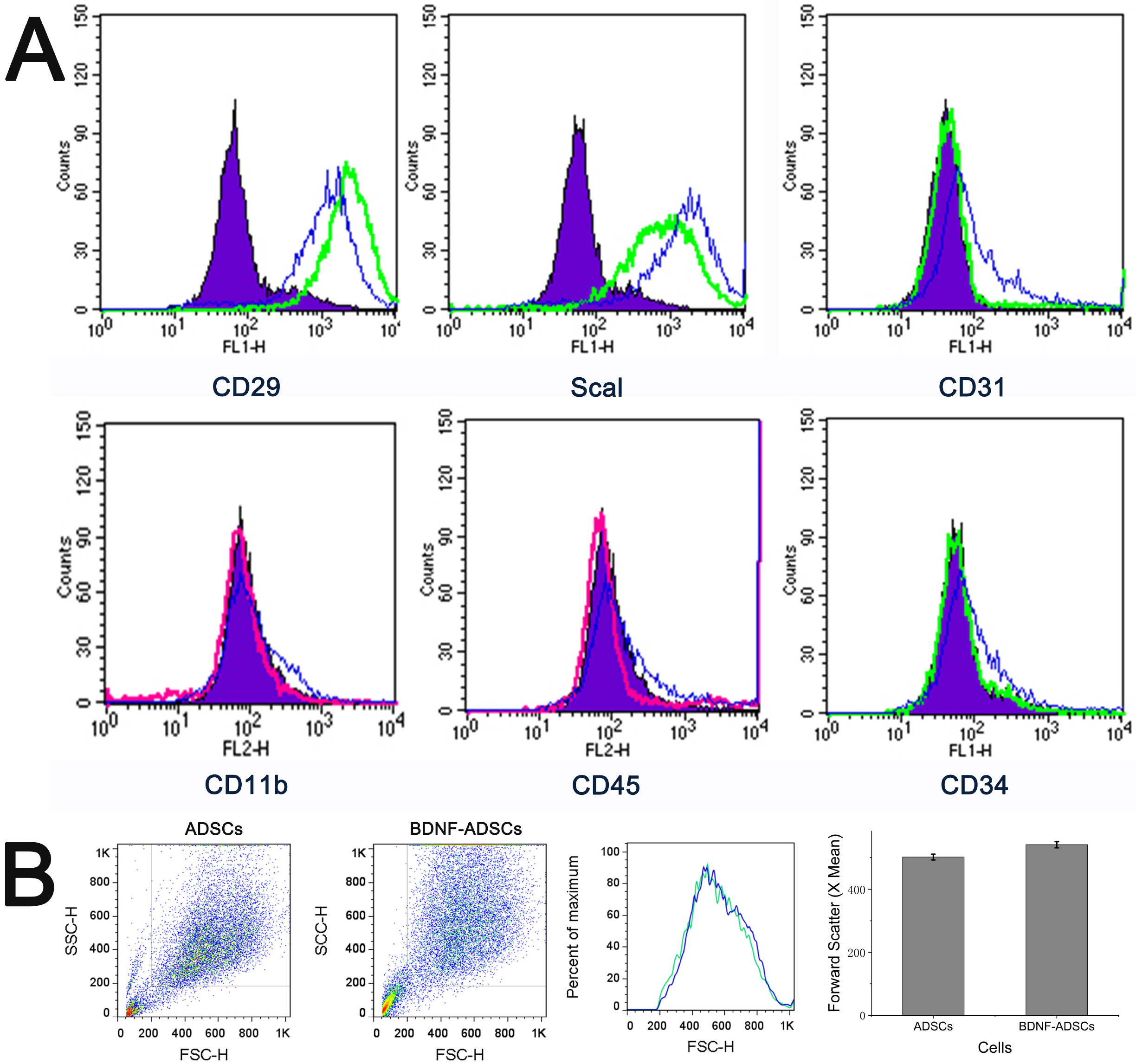

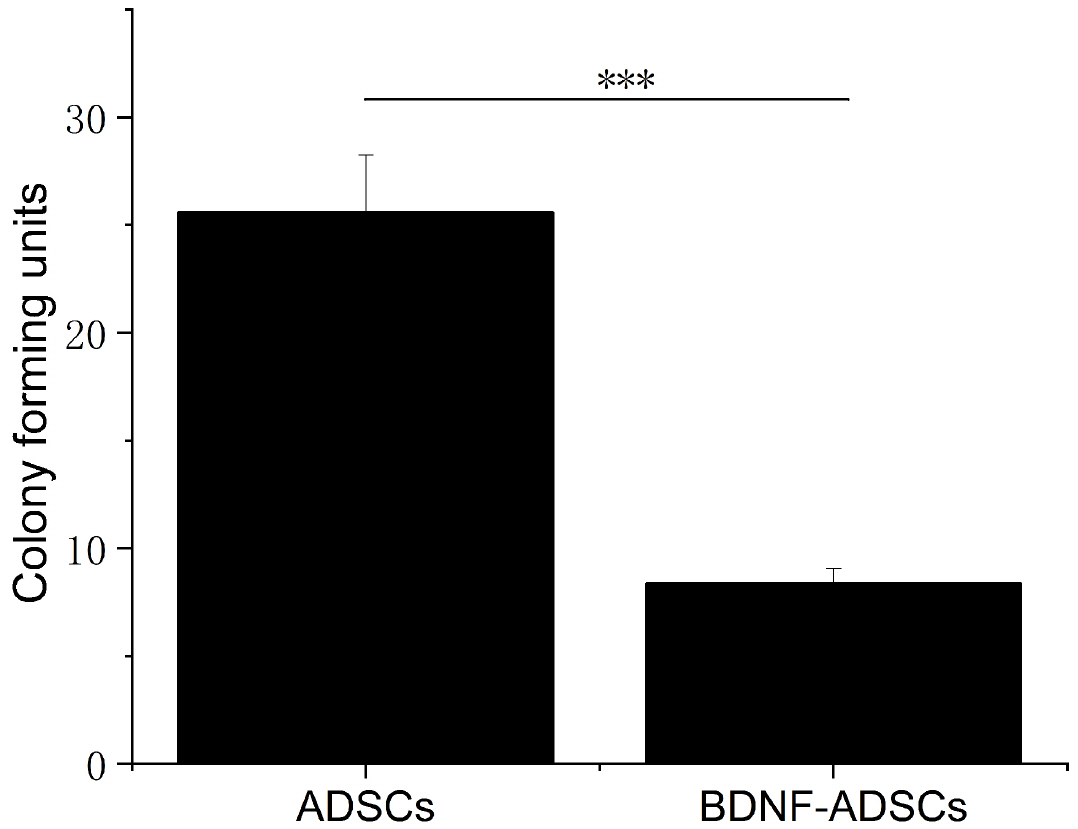
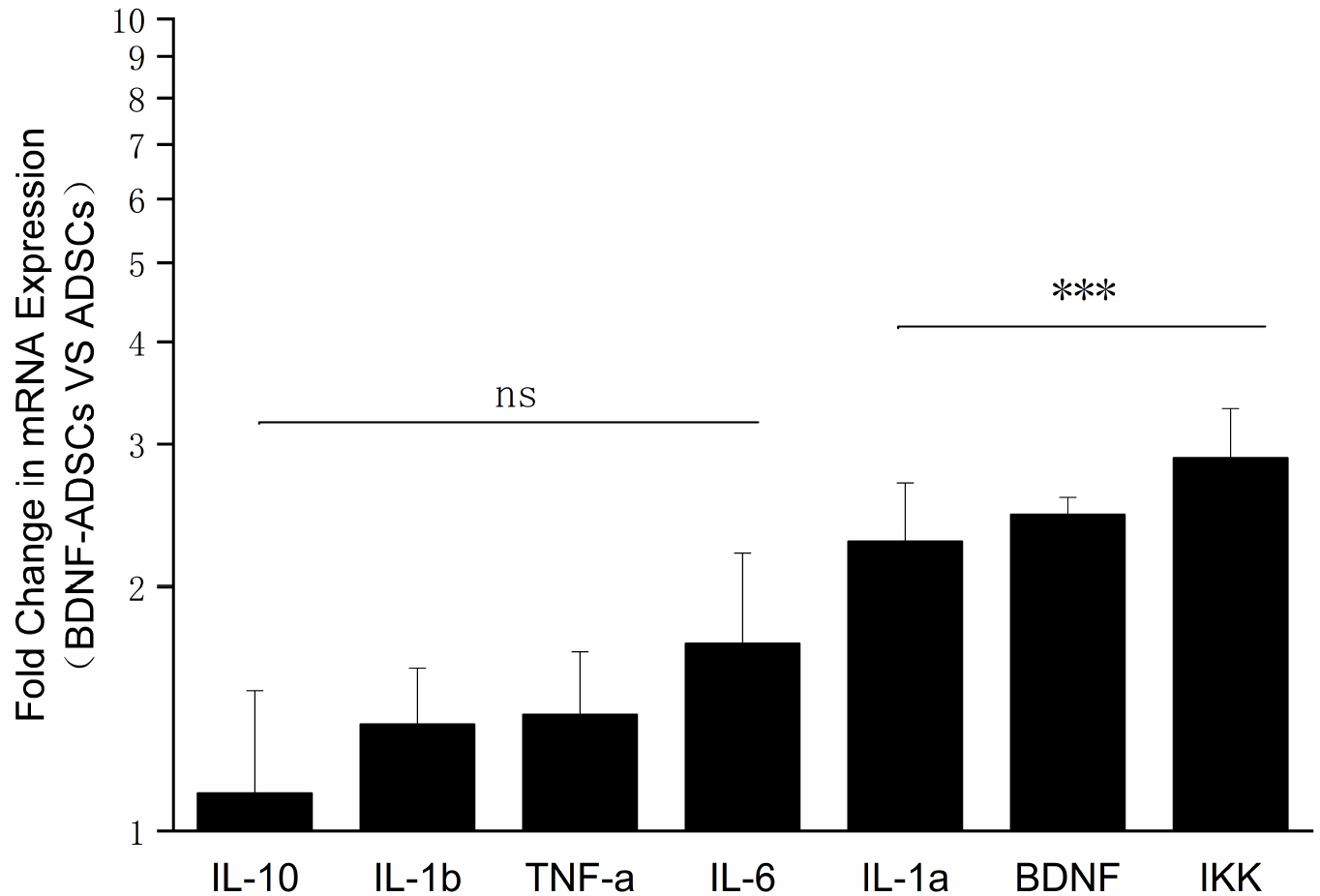




 PDF
PDF Citation
Citation Print
Print


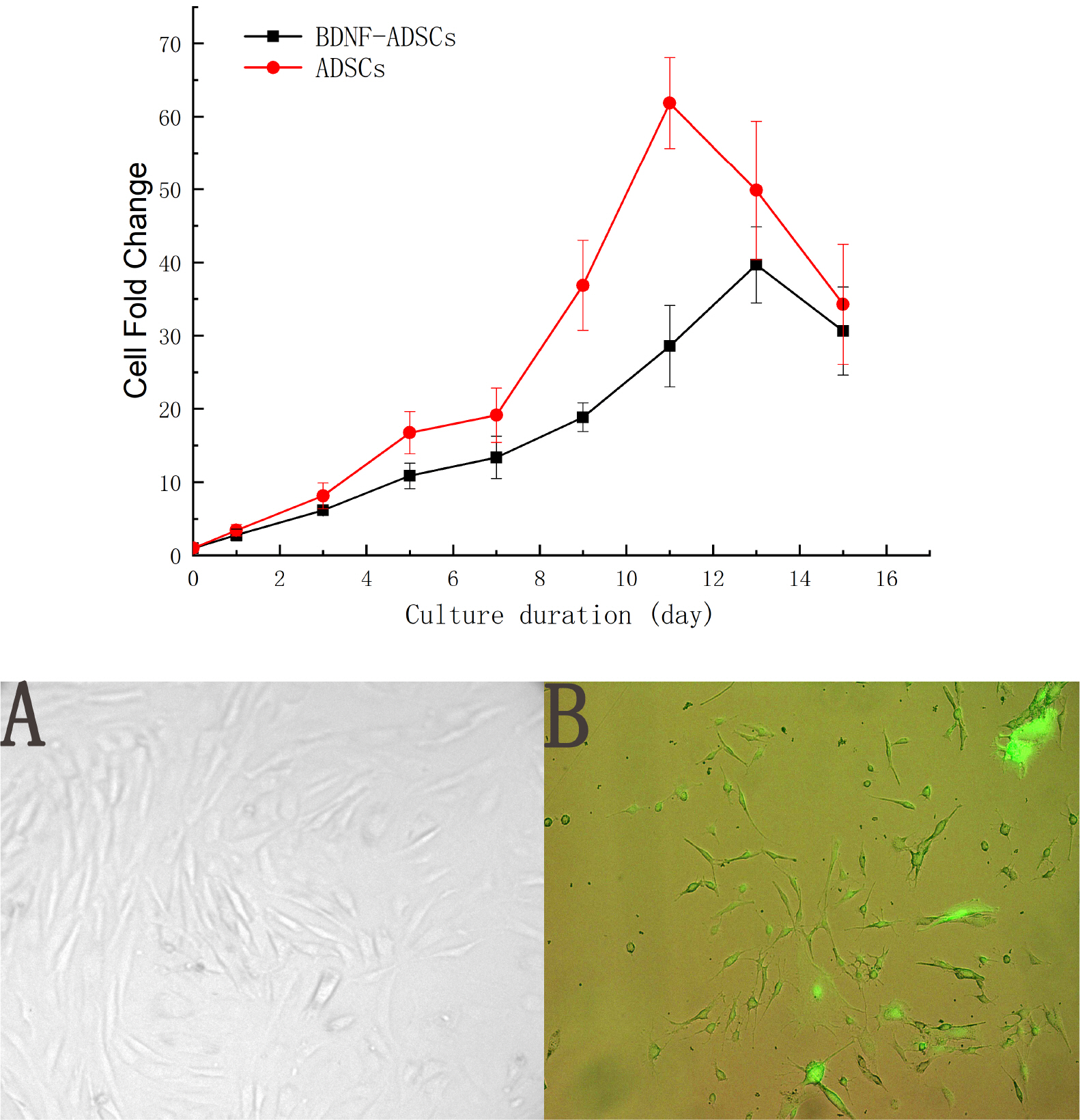
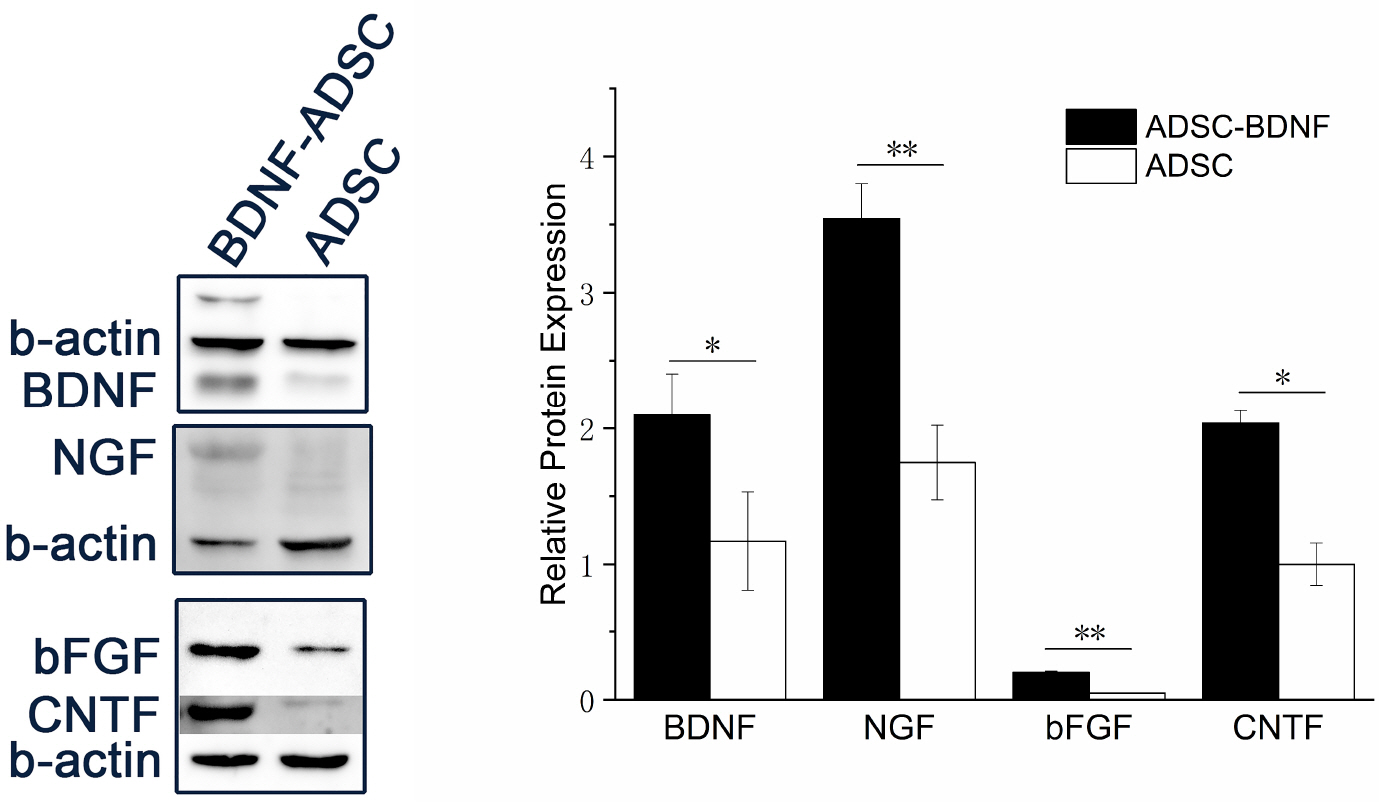
 XML Download
XML Download